
The Piper PA-28 Cherokee is a family of two-seat or four-seat light aircraft built by Piper Aircraft and designed for flight training, air taxi and personal use. The PA-28 family of aircraft comprises all-metal, unpressurized, single-engined, piston-powered airplanes with low-mounted wings and tricycle landing gear. They have a single door on the right side, which is entered by stepping on the wing.

The Fairchild PT-19 is an American monoplane primary trainer aircraft that served with the United States Army Air Forces, RAF and RCAF during World War II. Designed by Fairchild Aircraft, it was a contemporary of the Kaydet biplane trainer, and was used by the USAAF during Primary Flying Training. As with other USAAF trainers of the period, the PT-19 had multiple designations based on the powerplant installed.
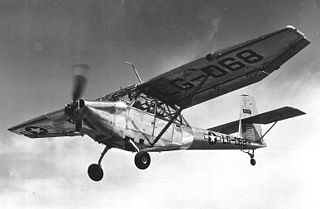
The Stinson L-13 was a US military utility aircraft first flown in 1945.

The Cessna 180 Skywagon is a four- or six-seat, fixed conventional gear general aviation airplane which was produced between 1953 and 1981. Though the design is no longer in production, many of these aircraft are still in use as personal aircraft and in utility roles such as bush flying.

The Curtiss Robin, introduced in 1928, was a high-wing monoplane built by the Curtiss-Robertson Airplane Manufacturing Company. The J-1 version was flown by Wrongway Corrigan who crossed the Atlantic after being refused permission.

The Continental O-170 engine is the collective military designation for a family of small aircraft engines, known under the company designation of A50, A65, A75 and A80. The line was designed and built by Continental Motors commencing in the 1940s. It was employed as the powerplant for civil and military light aircraft.
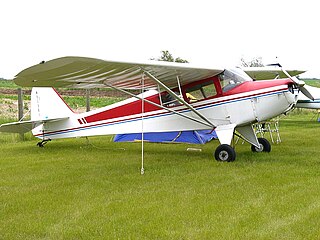
The Taylorcraft B is an American light, single-engine, high-wing general aviation monoplane, with two seats in side-by-side configuration, that was built by the Taylorcraft Aviation Corporation of Alliance, Ohio.

The Cessna 185 Skywagon is a six-seat, single-engined, general aviation light aircraft manufactured by Cessna. It first flew as a prototype in July 1960, with the first production model completed in March 1961. The Cessna 185 is a high-winged aircraft with non-retractable conventional landing gear and a tailwheel.

The Taylorcraft L-2 Grasshopper is an American observation and liaison aircraft built by Taylorcraft for the United States Army Air Forces in World War II.

The Naval Aircraft Factory TS-1 was an early biplane fighter aircraft of the United States Navy, serving from 1922 to 1929.
Rearwin Airplanes was a series of US airplane-manufacturing businesses founded by Andrew ("Rae") Rearwin in 1928. Rae Rearwin was an American businessman who had developed several successful business ventures in the Salina, Kansas area in the early 20th century. Although he had no experience with aircraft manufacturing, he felt that he could succeed with his solid business acumen. With his two sons, Ken and Royce, he hired some engineers and built the Ken-Royce in a garage in Salina. The business moved to the Fairfax Airport in Kansas City, Kansas, and went through several variations before it was sold to Commonwealth Aircraft in 1942, which went bankrupt in 1946.

The Aeronca L was a 1930s American cabin monoplane designed and built, in small numbers, by Aeronca Aircraft. It differed significantly from other Aeronca planes by the use of radial engines, streamlining, and a cantilever low wing.
The Casmuniz 52 was a twin-engine light transport aircraft. It was the first all-metal aircraft built in Brazil, only the prototype was built.

The Rearwin Sportster is a 1930s American two-seat, high-winged, cabin monoplane designed and built by Rearwin Aircraft & Engines for sport/touring use.

The Rearwin Cloudster was a two or three-seat civil utility aircraft produced by the Rearwin Aircraft & Engines Company of Kansas City, Missouri beginning in 1939. It was a strut-braced, high-wing monoplane of conventional design with an enclosed cabin and fixed, taildragger undercarriage. One specialized version was produced as a trainer for Pan American Airways.
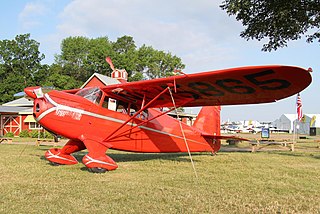
The Rearwin Speedster was a two-seat, high-wing, sport aircraft produced by Rearwin Airplanes Inc. in the United States in the 1930s.

The Aeronca K series, Aeronca Chief, Aeronca Super Chief, Aeronca Tandem, Aeronca Scout, Aeronca Sea Scout, Aeronca Champion and Aeronca Defender were a family of American high-winged light touring aircraft, designed and built starting in the late 1930s by Aeronca Aircraft.
The Falconar SAL Mustang, also called the 2/3 Mustang and the SAL P-51D Mustang is a Canadian amateur-built aircraft, originally produced by Falconar Avia and introduced in 1969. The aircraft is a 2⁄3 scale replica of the North American P-51 Mustang and is supplied as a kit or as plans for amateur construction.
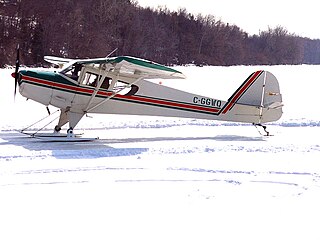
The Taylorcraft Model F-19 Sportsman is a two-seat cabin monoplane designed and built by Taylorcraft Aircraft as the first new product of the reformed Taylorcraft Aviation Company. The F-19 fuselage is a fabric-covered 4130 steel tube framework; its wing is fabric-covered with a wooden spar. It has conventional landing gear and a tractor configuration 100 hp (75 kW) Continental O-200 engine.
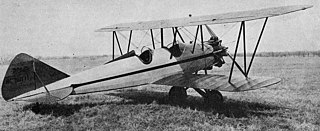
The Rearwin Ken-Royce was an American three-seat sport/touring biplane built by Rearwin Airplanes first in Salina, Kansas then Kansas City. It was the first airplane built by the company.


















